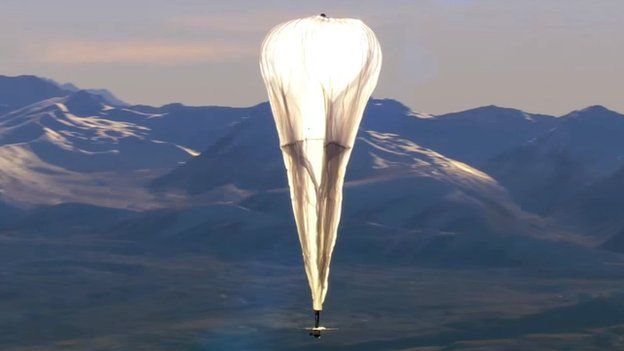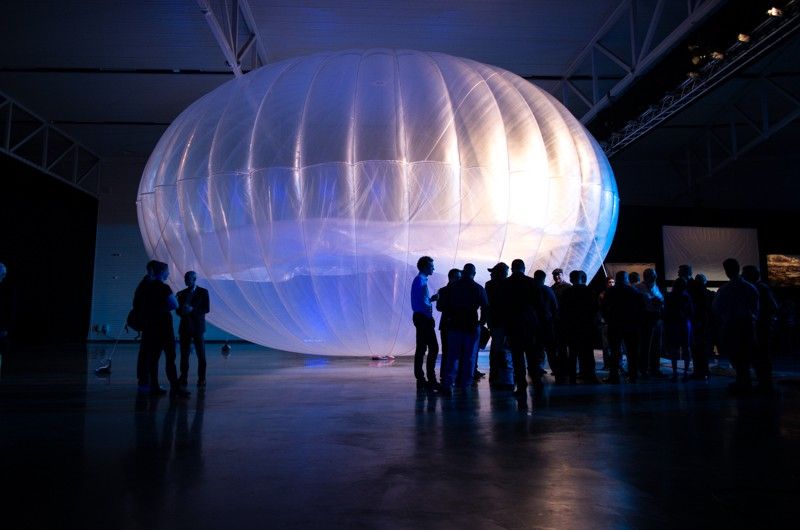Google Baloons : A Project To Provide Internet Connectivity To Even Rural An Hard-To-Reach Regions
Jul 08, 2019 • 49 views
A Google-backed project to bring web connectivity to rural areas around the world is set to launch its first service in Kenya. Google’s balloon project had a new trail providing Internet access to ‘mountainous villagers’ in Kenya. The company has recently provided wireless service to natural disaster victims in Peru and Puerto Rico.
The project is led by Loon, which is owned by Google’s parent company, Alphabet. Large balloons carry solar-powered equipment high in the sky to send high-speed internet signals to the ground. There is no longer any doubt that high-altitude balloons can be used to provide cellular service to remote locations or places reeling from natural disaster.

The balloons are made of polyethylene plastic around the thickness of a sandwich bag. Each inflated balloon is approximately 50 feet wide by 40 feet high (15 meters wide by 12 meters high), with about 5,381 feet (500 square meters) of surface area. Their size necessitates working on them in giant hangars, such as Google's rented space at Moffett Federal Airfield in California.
The project involves Telkom Kenya, the country’s third-largest telecommunications company. The service will sell 4G internet service to people living in a rural, mountainous area. Kenyan transportation officials said they expect to give final approval to the project this month.

“We recently received approval to begin flying over Kenya and plan to dispatch balloons in the coming weeks for network integration testing with our partner Telkom," Loon spokesman Scott Coriell said. "Our goal is to launch commercial service in Kenya in the coming months, before the year’s end.”
Loon aims to bring high-speed internet connectivity to places where populations are “unserved or underserved.” The sky-based system can deploy to areas where there are too few people to support the building of signal equipment on the ground.
The balloons that lift the equipment are about 24 meters tall and eight meters wide, Loon says in a description on its website. It is made of a plastic material that is built to last at least 100 days.
The balloons are filled with gas that is lighter than air and rise up to 20 kilometers into the sky – a height twice as high as airplanes fly. This helps the balloons avoid weather problems and wildlife.
Loon balloons move through the skies by wind currents that carry them up and down during the flight path. They are designed to link up with a team of balloons over areas lacking internet connectivity.
Stations on the ground send signals from local internet service providers up to the balloons. These signals are then fed back to earth in a similar way to how satellites work. People on the ground can then connect to the high-speed internet service. Loon says solar collectors power the equipment during the day and charge a battery to run the system at night. When the life of the balloon ends, a parachute self-deploys to guide it back down to the ground.

The sky-based system already showed success in temporary service launches in Peru and Puerto Rico during natural disasters. It was very useful during natural disasters; the Alphabet company also demonstrated the versatility of its approach by quickly providing LTE connectivity after a magnitude 8.0 earthquake in Peru.

The Loon project has faced a number of problems. The balloons only last a few months before disintegrating, for example, and work only in sunny places because they depend on solar energy.
Since Loon was launched back in 2011, a large number of companies have been racing to provide broadband connectivity from space, which may prove a more easier way of getting internet access to unreachable places.
Have a question??You canfollow me on Instagram(@tanzilmahmood)and ask your travel questions in a direct message on Instagram too.
